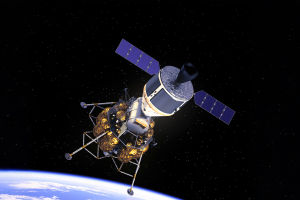
Hello Lykkers! Spacecraft have fascinated us for decades, allowing humanity to explore beyond our planet.
But how do these incredible machines actually fly in the vacuum of space?
The absence of air and gravity presents unique challenges that spacecraft must overcome to navigate the vast expanse of space. Below, we explore how spacecraft travel in space and the technologies that make it all possible!
1. The Role of Thrusters in Spacecraft Movement
In the absence of air, spacecraft rely on rockets and thrusters for propulsion. Unlike on Earth, where aircraft use wings to generate lift by pushing air downward, spacecraft don't need lift. Instead, they use thrusters, which is the force generated by expelling mass at high speed.
This follows Newton’s Third Law of Motion, which states that for every action, there is an equal and opposite reaction. By ejecting propellant at high speeds from engines or thrusters, spacecraft generate enough force to move in the opposite direction, allowing them to travel in space.
2. How Spacecraft Maintain Their Speed
One of the most fascinating aspects of spaceflight is that once a spacecraft reaches its desired speed, it doesn't need to constantly use fuel to maintain it. This is due to the absence of friction in space. Unlike on Earth, where air resistance slows down moving objects, in space, there's virtually no matter to create drag.
Once a spacecraft has achieved its speed, it continues in motion due to its momentum, which is preserved until another force acts on it, like gravity from a planet or another object. This is why spacecraft can coast through space for extended periods without using much fuel.
3. Navigation in Space: Using Gravitational Assists
Spacecraft need to navigate vast distances, and with the enormous size of space, traditional methods of navigation like steering a car or plane aren't possible. Instead, spacecraft often use gravitational assists or “slingshot maneuvers.” By flying close to a planet or moon, a spacecraft can harness the gravitational pull of that object to increase its velocity and change direction. This technique allows spacecraft to save fuel and gain speed by "stealing" energy from a planet’s gravity.
4. The Importance of Rocket Staging
Most space missions use multi-stage rockets, where each stage has its own engine and fuel. Once a stage burns through its fuel, it is jettisoned, making the spacecraft lighter and allowing the next stage to continue the journey. This process is critical for missions to deep space, as the spacecraft must escape Earth's gravitational pull and continue accelerating toward its destination. Each stage works in sequence, allowing for a gradual increase in velocity, which is vital for overcoming Earth’s gravity and reaching space.
5. Fine-Tuning Spacecraft Movements with Thrusters
In space, spacecraft don't have the luxury of using a steering wheel or rudders like airplanes. Instead, they use reaction control systems (RCS) that are small thrusters located on the spacecraft’s body. These thrusters help the spacecraft change its orientation and attitude, allowing for precise adjustments when docking, landing, or adjusting course. The thrusters work by expelling small amounts of fuel, generating enough force to rotate or shift the spacecraft’s position without needing large amounts of fuel.
6. How Spacecraft Slow Down in Space
While spacecraft can coast through space without much resistance, slowing down is still necessary for landing or maneuvering into orbit. This is usually achieved by using retrograde thrusters, which fire in the opposite direction of travel. In some cases, spacecraft can also use planetary gravity to decelerate. For example, when entering orbit around a planet, the spacecraft's speed must be adjusted to match the planet’s orbit, which is done by firing thrusters in the opposite direction of its motion.
7. Spacecraft Design and Navigation Systems
Modern spacecraft are equipped with advanced navigation systems and gyroscopes to help pilots or automated systems control the spacecraft. These systems use sensors to detect the orientation of the spacecraft and make necessary adjustments. In addition, spacecraft are designed with materials that can withstand extreme conditions of space, such as temperature fluctuations, micro-meteoroid impacts, and radiation.
The science behind how spacecraft fly in space is a blend of Newtonian physics, advanced engineering, and cutting-edge technology. Thrusters, momentum, gravitational assists, and precise control systems allow spacecraft to travel vast distances and reach incredible speeds.
As space exploration continues to evolve, these principles will guide us further into the cosmos, unlocking new possibilities for humanity’s journey into the stars. With each new mission, the question of how spacecraft fly in space becomes not just about physics, but about pushing the boundaries of what’s possible!
How Do Spaceships Fly?
Video by Spark


